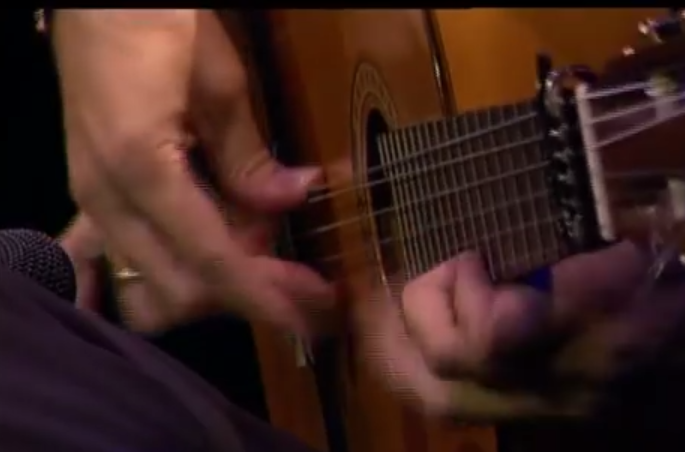|
Ricardo -> RE: The middle joint in picado (Mar. 28 2017 22:34:27)
|
quote:
For this reason it's difficult to make any comparisons between players - about how much they are letting that joint give - Paco's tips could well be at full hyper extension
And so with this I got to thinking and studying more carefully all these videos and discussions of teachers and have come to an interesting conclusion. That is, for years myself and many other teachers (including Diaz, and PDL himself it seems via both diaz and Paco de malaga I have heard this to be true), that we should avoid hyper extension (of tip joint, or TJ as I call it later), not because of physicality but because of speed or control of the movement and rest and power/tone etc. HOWEVER...As it turns out, I honestly feel that the TIP JOINT flexability is an extremely important aspect of picado, totally underestimated IMO. Simply put, it has to do SEVERAL different things depending on what is being played, relative to the hand and the other finger. The mechanics are not so simple as "let it flex" or "keep it stiff", it is a complex combination of these things. I don't think people's physiology has much to do with it, but for sure being able to control this thing is an overlooked issue.
Here is the jist.
Big joint (BJ) is responsible for drive and reset action.
Middle joint (MJ) needs to remain bent at whatever angle and stiff before BJ drives, but can reorient itself when BJ resets, if there needs to be a "reach" for a string change for example. So if the sharply bent m finger played string 2 but needs to prepare for string 1, MJ allows to straighten to reach over the string and prepare. And conversely if m played string 2 but i is going to move from 2nd string down to 3rd string (say both had already played string 1 at some point), MJ can bend more for i finger in order to reach back to prepare for playing string 3.
Tip joint (TJ), which is naturally curved at rest allows some flexion before BJ drives depending on the string it is on. For example if i is playing string 1, TJ only flexes into straight alignment then stiffens, rather than flop over the string. However if m finger plays string 2 next or before that, TJ of m must be allowed to hyperextend as BJ drives, so that a proper rest can occur. So we observe then a stiff i TJ, and a hyperextended m TJ. Conversely if m finger plays string 1 TJ can flex only to straight alighnment and stiffen, while if i next or before has to play string 3, TJ must hyperextend as BJ drives i in order to make a proper rest stroke. The skip of strings here really makes it clear we observe a stiff m TJ vs a hyperextended i TJ.
So there is about a 3 string spread here that governs how much reach or bend MJ will need, and how much flex TJ will use, before the ARM has to readjust the entire mechanism. So the arm/thumb/hand will allow the fingers to orient over a group of 3 strings, and these complex variations of TJ flex and MJ reach/bend will remain relative as BJ drives and resets the repetitions. By seeing where the thumb and arm is, one can predicted how the TJ's will be flexing on what strings, in other words.
Maybe a video is needed? [:D]
|
|
|
|

